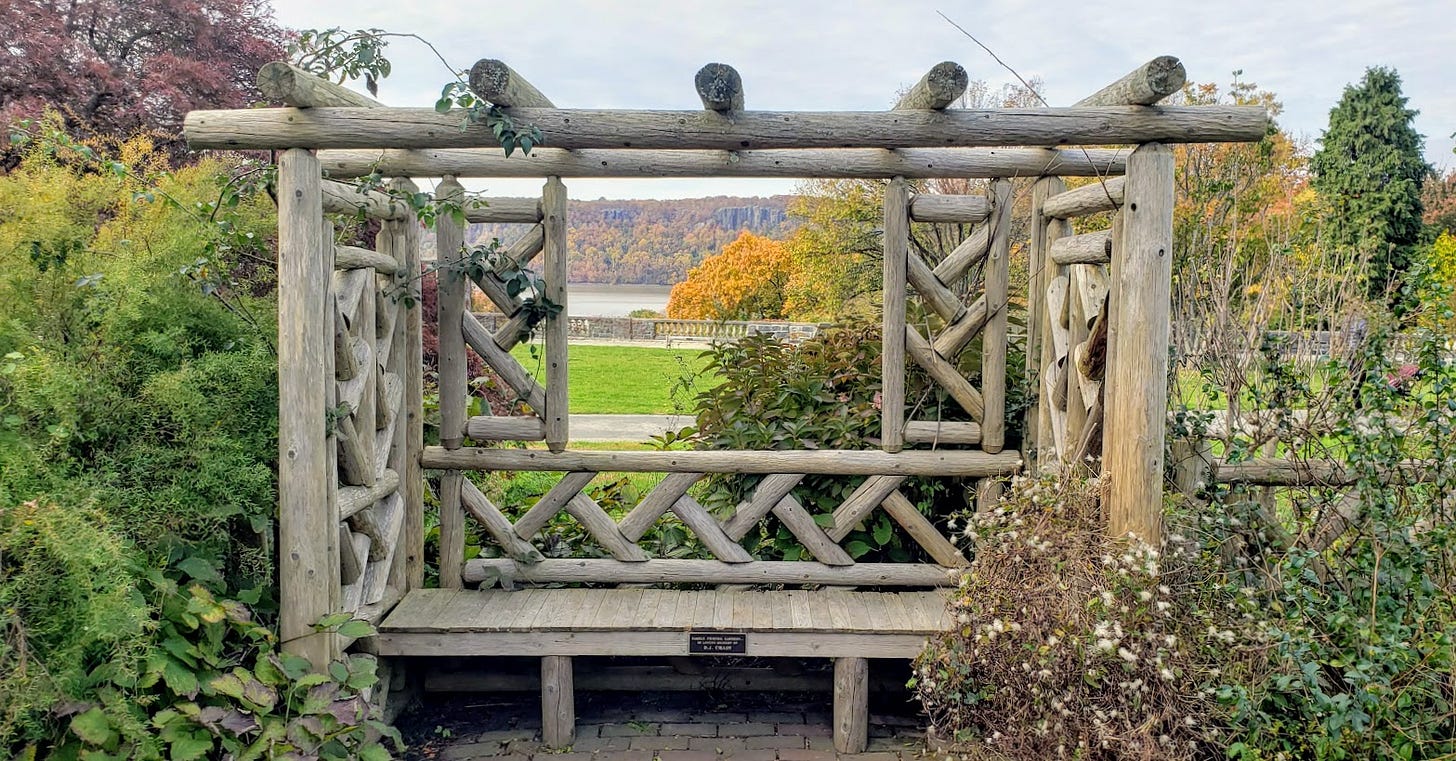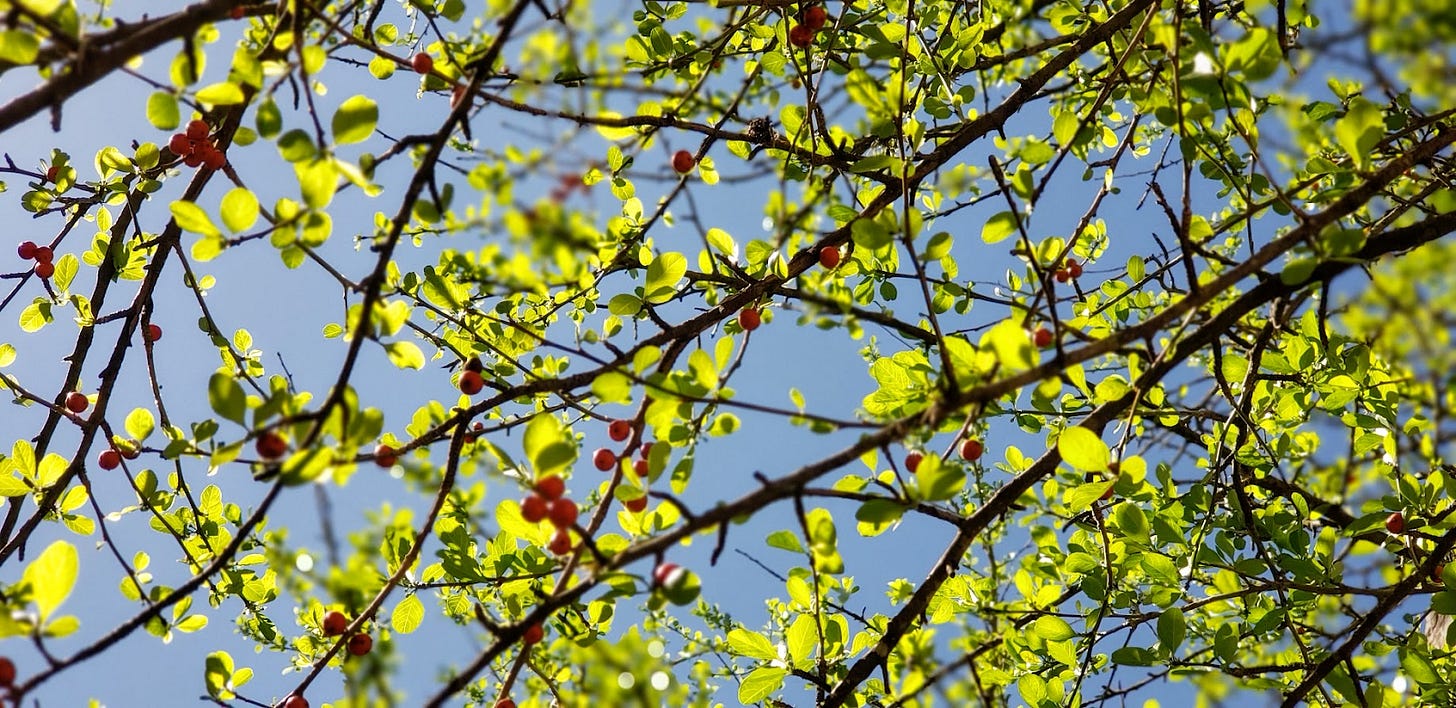Visiting botanical gardens and arboretums is one of my favorite pastimes. Thoughtfully designed landscapes are powerful sources of awe, inspiration, delight and comfort.
Not too long ago, I strolled through Wave Hill, a gloriously situated public garden on the banks of the Hudson River in the Bronx. Around each bend was another breathtaking vista.
As I wandered and perused the plant labels, though, an unsettling thought took shape: Wave Hill and most of its peer botanical gardens in the US are essentially zoos for plants. Their mission is collecting and displaying unusual specimens, whether they've been imported from faraway locales or cultivated by humans to yield novel variations on old standbys. The more exotic the source or the hybridization, it seems, the better.
I believe this is a holdover from the Victorian-era practice of “plant hunting,” which appears to have been equal parts elitist sport, imperial conquest, and cutthroat business. British accounts describe the "hunters" as swashbuckling daredevils, who braved "avalanches, raging storms, earthquakes, tropical diseases and irate locals" to acquire botanical artifacts, sometimes (often?) through outright theft. Pinky swear, I'm not making this up. Meanwhile, wealthy Victorian consumers, among them botanical gardens, signaled their status and one-upped their peers by filling their borders and conservatories with the hunters’ bounty.
There's no denying the beauty of most botanical gardens, and I'd like to think ethics play a larger role in their curation today than was the case in the plant-hunter heyday. But the overall approach still seems to reflect that Victorian impulse to display the rare and unusual.
Given what we now know about the critical role of sustainable landscapes in conserving biodiversity and supporting ecosystem functions, these institutions are wasting valuable opportunities to preserve native plants and contribute to wildlife habitat corridors. Also, these sites are influential. People go to public gardens to get ideas and inspiration for their own homes. So it seems irresponsible that they persist in celebrating exoticism rather than using their considerable resources to more assertively advocate for, and educate on, native plants.
True, venerable establishments like the New York Botanical Garden and the Brooklyn Botanic Garden (BBG) have pockets dedicated to native plants. These are welcome additions to their overall collections. But they're often tucked away in corners and feel like afterthoughts. I visited the BBG “Native Flora Garden'' recently. I was musing on how thoughtfully it was designed, only to be brought up short when I saw, just a few feet from the native flora exit, an extensive and deliberately-planted bed of invasive English ivy. What message does that little buzzkill send?
This compartmentalization reminds me of the involuntary reaction I have when International Women's Day rolls around on March 8 each year: Really? What about the other 364 days?!
Happily, there are a few botanical gardens that focus on native plants exclusively (all 365 days!). One of these is the Lady Bird Johnson Wildflower Center in Austin, which I had the pleasure of visiting last week.
Tributes to Lady Bird Johnson (1912 - 2007) describe her as an environmentalist. And true enough, due in part to her advocacy, more than 200 environmental laws were passed during the administration of President Lyndon B. Johnson. These included the Wilderness Act of 1964, the Land and Water Conservation Fund, the Wild and Scenic Rivers Program, the 1965 Highway Beautification Act, and various additions to the National Park system. She also founded the native-plant botanical garden now named after her. That said, my sense is that her interest was driven more by an appreciation of beauty, combined with a politically-tinged pride in Texas, than by concerns about ecological integrity.

But that works for me. It just reinforces the point that sustainable landscapes can be as gorgeous as they are environmentally healthy, not least because they include plants and abundant wildlife. You don't have to be a card-carrying eco-warrior to do good for the planet. (You can maybe just want to show off something that Jackie Kennedy doesn’t have. Just as a hypothetical example.) Beauty and environmentalism are entirely compatible so long as native plants are in the mix.

Research is key to the Center's mission. They collect and bank native seeds, restore landscapes damaged by catastrophic fires and floods, propagate endangered plants and mobilize citizen “weed warriors.” They study the use of native plants to address water scarcity, climate change and loss of healthy ecosystems and provide landscape and ecological restoration services. They also host Native Plants of North America, the most comprehensive database of U.S. native plants. I use this searchable site on an almost daily basis. It’s a treasure trove of information.
One of the Center’s initiatives is understanding the impact of grazing -- whether by livestock or native buffalo -- and controlled burns on savannas. They replicate the effect of grazing by mowing at varying heights and different times of the year.
Wherever you may be, I encourage you to visit botanical gardens, particularly those that may focus on native plants. Let us know in the comments if you have some favorites! When you're visiting more mainstream public gardens, keep an eye out for what's native, non-native and even invasive -- and given a chance, maybe ask the staff about how their plant choices relate to their environmental philosophy (I’m looking at you, English ivy and South African agapanthus!).
Resources
Patrick Mulligan and Ellen McHale, “How Victorian Plant Hunters Shaped British Gardens,” Kew Royal Botanic Gardens, January 24, 2020.
“The Weird and Wonderful World of the Plant Hunters - Part 1,” Trees for Cities, July 31, 2019.








We went to Milwaukee this summer and visited Lakeshore State Park. I noticed lots of butterflies before I realized it was a native plant garden. It’s beautiful - right on the lake.